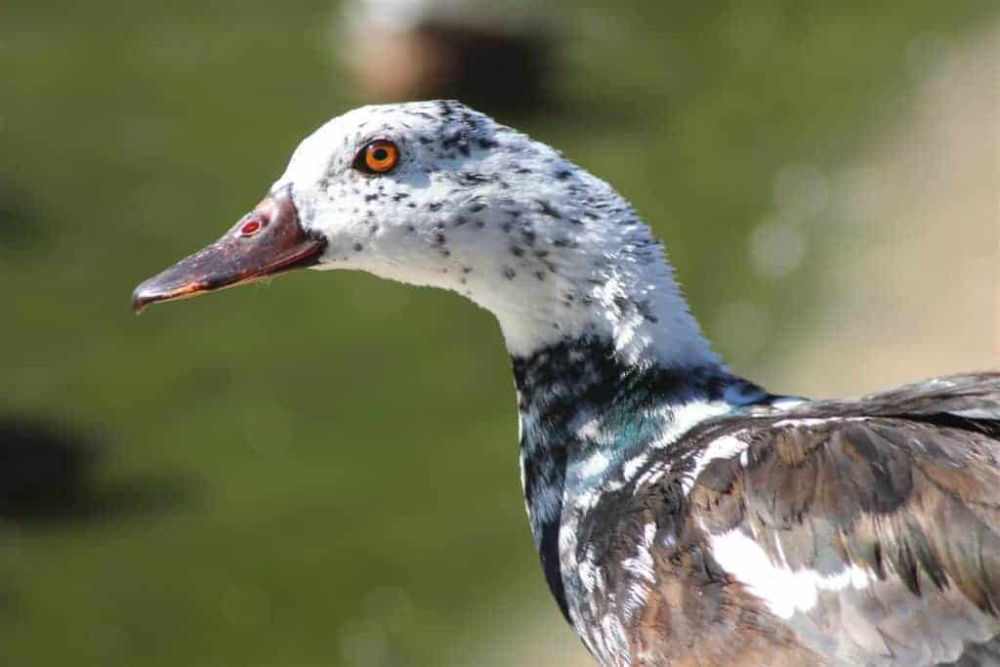The White-winged Duck (Asarcornis scutulata) is a distinctive and rare waterfowl native to Southeast Asia. Recognized for its striking appearance and elusive nature, this species has intrigued ornithologists and bird enthusiasts alike. With its population dwindling and habitat threatened, understanding and conserving this species has become a priority for conservationists worldwide.
Taxonomy and Description
The White-winged Duck belongs to the family Anatidae and is the only species in the genus Asarcornis. Formerly placed in the genus Cairina, it has since been reclassified due to significant differences in morphology and behavior compared to other ducks in that genus.
The White-winged Duck is one of the largest species of ducks, measuring 66 to 81 cm (26 to 32 inches) in length. The bird is predominantly dark, with a glossy green-black head and upperparts. The most distinguishing feature is its white wing patches, visible during flight. The underparts are mottled brown and white. It has a stout, yellowish bill, which aids in foraging. Males and females are similar in appearance, though females tend to be slightly smaller and less vibrant in plumage.

Habitat and Distribution
The White-winged Duck inhabits dense tropical forests, particularly favoring slow-moving or stagnant water bodies such as swamps, marshes, and forested rivers. Its historical range included much of Southeast Asia, but now it is primarily found in isolated pockets in Myanmar, Thailand, Laos, Cambodia, Vietnam, India, and Indonesia.
Behavior and Ecology
The White-winged Duck is omnivorous, feeding on a variety of aquatic plants, seeds, small fish, and invertebrates. It forages mostly at dawn and dusk, using its bill to sift through the water and mud. The species typically nests in tree cavities or on the ground close to water. Nesting sites are often in dense forest areas, which provide protection from predators. The breeding season varies by region but generally occurs during the wet season. A typical clutch contains 7-12 eggs, which the female incubates for about 30-35 days.
The Duck is generally solitary or found in small groups. It is known to be shy and secretive, making it difficult to observe in the wild.
Conservation Status
The White-winged Duck is classified as Endangered on the IUCN Red List. Its population is estimated to be less than 1,000 mature individuals, and the trend is decreasing.
Habitat loss, primarily due to deforestation and drainage of wetlands for agriculture and development, is the primary threat. Although hunting pressure has decreased, it remains a concern in some areas. Human activity and habitat fragmentation also contribute to its decline.
Conservation Efforts
Conservation initiatives for the White-winged Duck involve habitat protection, restoration projects, and anti-poaching measures. Key strategies include establishing and enforcing protected areas to safeguard critical habitats, involving local communities in conservation efforts through education and sustainable practices, conducting research to better understand the species’ ecology and population dynamics, and monitoring populations to track changes over time.
Conclusion
The White-winged Duck, with its unique characteristics and critical status, symbolizes the challenges faced by many forest-dwelling species in Southeast Asia. Efforts to conserve this enigmatic bird not only aim to prevent its extinction but also highlight the broader need for sustainable management of tropical forest ecosystems. Through concerted global and local conservation actions, there is hope for the survival of the White-winged Duck and the preservation of the biodiversity it represents.









